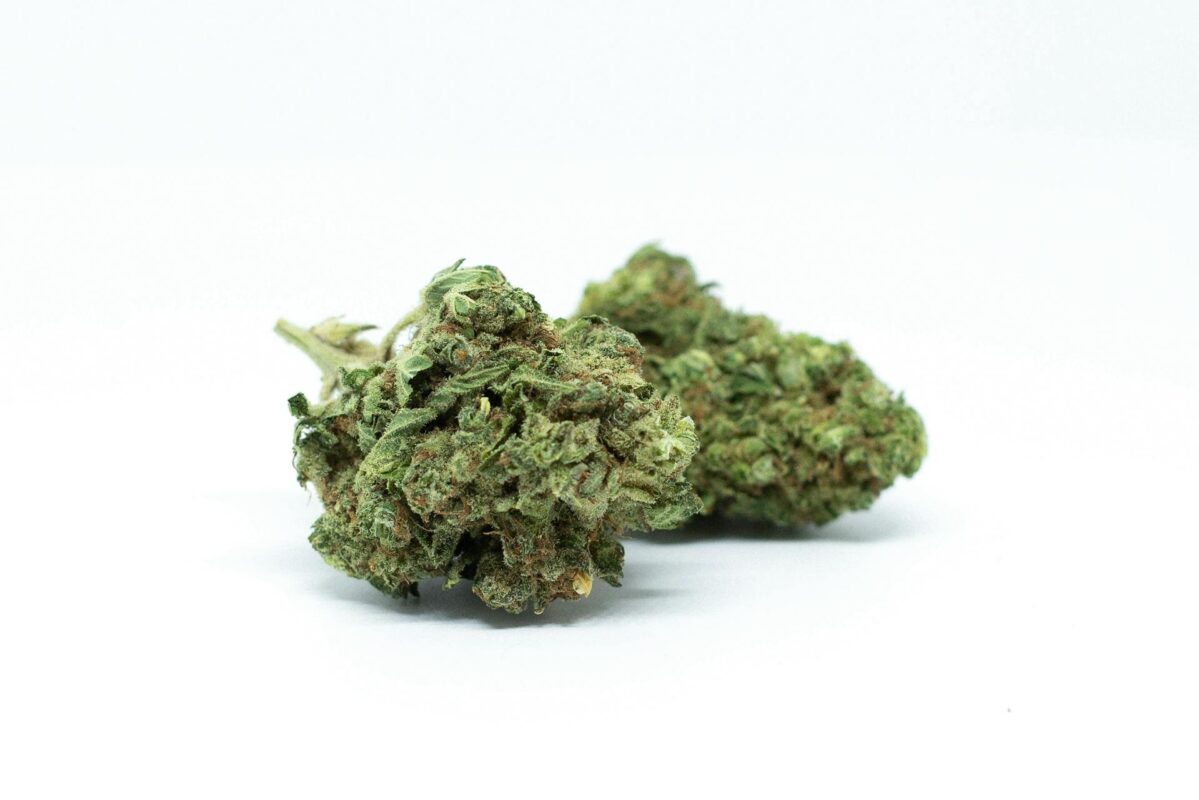Study Suggests Weed Could Be a Treatment for a Life-Threatening Muscle Condition
Rhabdomyosarcoma (RMS) patients can now order weed online to manage their condition. Recent studies suggest that cannabis – specifically certain strains and cannabinoid compositions – could offer therapeutic benefits for this life-threatening muscle condition.
Contents
- Key Takeaways:
- What is Rhabdomyosarcoma (RMS)?
- Cannabis and Rhabdomyosarcoma
- Going Beyond Cancer Cell
- What Cannabinoid Can Work Best for Rhabdomyosarcoma
- Order Weed Online: Product Selection
- How to Buy Weed Online to Manage RMS and Treatment Symptoms
- Combine THC with Your Cancer Treatment for Better Outcome
- Frequently Asked Questions
Key Takeaways:
- Rhabdomyosarcoma is a cancer that develops in skeletal muscles and has a reported survival rate of 20% in adults.
- THC reduces the viability of translocation-positive rhabdomyosarcoma cells by inducing apoptosis.
- Synthetic cannabinoids can bind strongly to CB1, inhibit cell growth, and cause apoptosis.
What is Rhabdomyosarcoma (RMS)?
It is a rare cancer that develops in skeletal muscles – primarily affecting children and teenagers, though it can occur in adults.
Each year, 400-500 people in the U.S. are diagnosed with this type of malignant disease. It affects connective tissue and may originate in progenitor cells, which later become muscle cells. The most common areas affected are the head and neck, followed by the genitourinary tract.
Traditional treatments include chemotherapy, surgery, and radiation. About 70% of children are alive five years after diagnosis, while the five-year survival rate for adults is 20%.
Not all treatments guarantee full effectiveness, so some patients, especially adults with low survival rates, turn to cannabis as a supplementary therapy.
Cannabis and Rhabdomyosarcoma
A 1993 Pittsburgh survey suggested a link between a child’s development of RMS and the birth parent’s use of cocaine and marijuana in the year before conception. Cannabis use was a possible co-factor with cocaine in the development of this malignant disease. However, no studies have specifically investigated whether cannabis use alone increases the risk of RMS.
Sixteen years later, Swiss researchers discovered that cannabinoids could kill cancerous cells in a laboratory setting. The results were confirmed in vivo, where treated cells led to tumor suppression. This Swiss study suggests cannabinoids could be a potential new treatment.
Swiss Research Findings
Cannabinoid receptor 1 (CB1) gene expression analysis revealed that biopsies from RMS with PAX3/FKHR or PAX7/FKHR translocations elevated levels of CB1 gene expression. Given that cannabinoid receptor agonists reduce proliferation and induce apoptosis in various cancers, this study evaluated CB1 as a potential drug target in this ailment.
Methods
Researchers have tested two cannabinoids:
- HU210, a synthetic cannabinoid that binds more strongly to Cannabinoid receptor 1
- Tetrahydrocannabinol binds to both CB1 and CB2 receptors
They assessed cell viability, apoptosis induction, AKT signaling inhibition, and p8 transcription factor involvement. Xenografts were treated with HU210 to evaluate tumor growth suppression in vivo.
Results
- Cannabinoid receptor agonists like HU210 and Delta(9)-tetrahydrocannabinol reduced the viability of translocation-positive RMS cells by inducing apoptosis.
- AKT signaling inhibition and p8 induction mediated this effect.
- Treatment with HU210 suppressed tumor growth in vivo.
Going Beyond Cancer Cell
Cannabinoids have shown anticancer reactions in various models by suppressing the invasion and proliferation of malignant cells and tumor angiogenesis. Tetrahydrocannabinol can also be a valuable aid in managing symptoms related to chemotherapy. Effectively managing these side effects can improve patients’ quality of life during the treatment.
Nausea and Vomiting
Chemotherapy’s side effects include nausea and vomiting, which can have a negative consequence on a patient’s quality of life and their capacity to tolerate and follow treatment.
Tetrahydrocannabinol exerts its anti-emetic outcomes by inhibiting 5-HT3 (serotonin) receptors in the area of postrema, a region of the brain that controls vomiting. It also activates CB1 receptors in the gastrointestinal tract to decrease gastrointestinal motility through inhibitory G-protein-coupled receptor effects.
Pain
Cancer-related pain can arise from mechanical or chemical stimulation of pain-signaling nerve endings or diseased, damaged, or compressed nerves. While pain is not always an early symptom, it can indicate that the disease has spread to nearby tissues and organs.
There are two cannabinoid receptors: CB1 and CB2.
CB1 receptors are in brain centers and are involved in pain modulation, the nociceptive pathways of the spinal cord, and peripheral nerves. CB2 receptors are primarily in the periphery, such as the immune and hematological systems, where they help reduce inflammation.
Tetrahydrocannabinol acts as an agonist for CB1 and CB2 receptors. It inhibits the release of neurotransmitters like glutamate and serotonin and alters dopaminergic function, which impacts pain pathways.
What Cannabinoid Can Work Best for Rhabdomyosarcoma
There are 2 main cannabinoids in a cannabis plant: THC and CBD. Although these are chemically similar, they have very different reactions in the body. Both can affect your mind and mood. Tetrahydrocannabinol is also intoxicating, as it can alter your consciousness, while cannabidiol does not have psychoactive effects.
These two also have distinct therapeutic properties. CBD has anti-anxiety, anti-inflammatory, and anti-epileptic benefits, whereas THC relieves nausea, pain, and spasticity.
For RMS treatment, it is highly advisable to access products with higher THC percentages.
Order Weed Online: Product Selection
You can consume tetrahydrocannabinol through various products, such as cannabis flower, concentrates, or edibles. With the overwhelming online variety, you may wonder what products you must take. Below are the best medical weed products you can try.
| Product | Type | THC Content | Consumption Method |
| Red Congolese | Sativa Dried Flower | 29% | Smoking or Vaping |
| Jolly Rancher Sour Gummies | Gummies | 600 mg | Oral Consumption |
| Hard Rockz Lozenge – Blue Razberry | Hard Candy | 10 mg | Oral Consumption or Sublingual |
| Jeeter Juice – Animal Mintz 2G | Vape | 87% | Vaping |
How to Buy Weed Online to Manage RMS and Treatment Symptoms
You have two options for obtaining weed: visiting a physical dispensary or using an online dispensary. For medical patients, online dispensaries offer a significant advantage. They allow you to shop from home, which makes it much easier to get the product you need.
- Search for a reputable online shop that offers weed delivery services in your area.
- Create an account. This involves providing basic information and verifying your age.
- Look for the best brands and select the products you want.
- Place your order. Check the delivery options available. Some services offer same-day delivery, while others offer mail-order marijuana. Buy in bulk to stock up on your medical needs.
- Choose your preferred payment method. Many dispensaries accept credit cards, but some might allow you to pay with cash on delivery. Always ensure you choose a secure payment process to protect your financial information. You can contact the dispensary to determine more about their payment options.
- Sit back and wait for your cannabis delivery. Most services provide tracking so you can monitor your delivery status. Your weed order will be delivered discreetly to your doorstep.
Combine THC with Your Cancer Treatment for Better Outcome
Adults with Rhabdomyosarcoma have worse outcomes than children because the disease grows faster and can be harder to treat. For low-risk cases in adults, the 5-year survival rate is 20%. THC may help with the RMS treatment by reducing translocation-positive rhabdomyosarcoma cells through apoptosis.
Patients might consider the weed market and use this psychoactive compound to reduce the cancer spread potentially. GetLoud Cannabis’s website offers a selection of products with various dosages, from flower to edibles.
Frequently Asked Questions
What is the recommended dosage for using cannabis to treat cancer?
The dosage depends on weight, age, tolerance, the severity of the condition, and the consumption method. For beginners, the best approach is to start with the lowest dose possible.
Low doses can help manage mild symptoms without causing psychoactive effects. They also reduce the risk of tolerance development and side effects. If well-tolerated but not sufficiently effective, you can gradually increase the dosage.
Some formulations include a balance (1:1) ratio. This combination can provide muscle relaxation and pain relief with reduced psychoactive effects compared to the psychoactive compound alone.
For patients who are sensitive to high potency levels or prefer to avoid a product’s intense effects, formulations with high CBD, such as 20:1 or higher, can be an alternative.
Can microdosing THC work for destroying cancer cells?
There are no studies on microdosing and disease cell apoptosis, but microdosing may help manage chemotherapy-related symptoms, such as nausea and vomiting.


